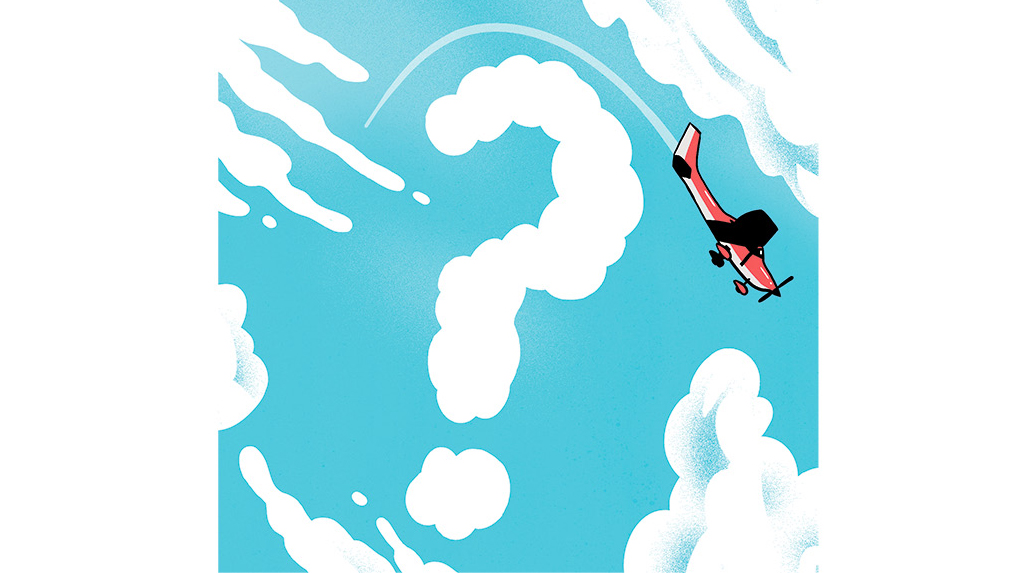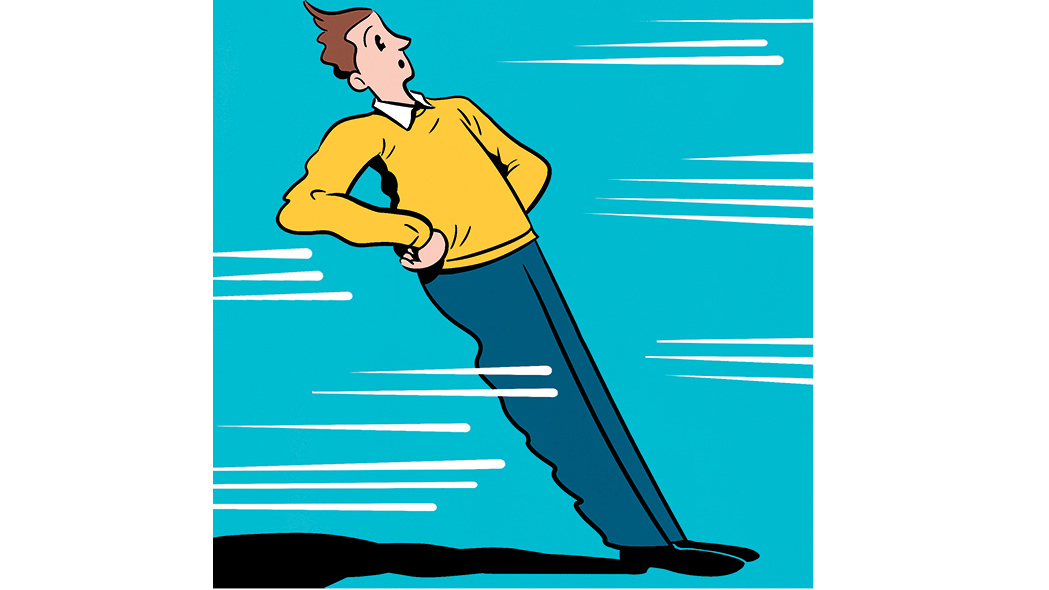Checkride-ready
See how you measure up to FAA standards with questions from the AOPA Pilot Information Center.
1. The four forces acting on an airplane in flight are
A. lift, weight, gravity, and thrust.
B. lift, weight, thrust, and drag.
C. lift, gravity, power, and friction.
2. What feature is associated with a temperature inversion?
A. Chinook winds on mountain slopes.
B. An unstable layer of air.
C. A stable layer of air.
3. Preventive maintenance has been performed on an aircraft. What paperwork is required?
A. The date the work was completed, and the name of the person who did the work must be entered in the airframe and engine logbook.
B. The signature, certificate number, and kind of certificate held by the person approving the work and a description of the work must be entered in the aircraft maintenance records.
C. A full, detailed description of the work done must be entered in the airframe logbook.
4. What cloud types indicate convective turbulence?
A. Nimbostratus clouds.
B. Cirrus clouds.
C. Towering cumulus clouds.
5. Why is frost considered hazardous to flight?
A. Frost changes the basic aerodynamic shape of the airfoils, thereby increasing lift.
B. Frost slows the airflow over the airfoils, thereby increasing control effectiveness.
C. Frost spoils the smooth flow of air over the wings, thereby decreasing lifting capability.
Ace
Can you correctly answer these questions from TWA captain and 28,000-hour pilot Barry Schiff?
6. True or false? A displaced threshold is that portion of a runway that may not be used when landing but may be used for takeoff.
7. According to the Aeronautical Information Manual, a pilot should complete the turn from base leg to final approach at least _____ from the runway threshold.
A. one-eighth mile
B. one-quarter mile
C. one-half mile
D. The AIM does not specify a minimum length for final approach.
8. A noninstrument-rated pilot needs to descend through a layer of cloud without the use of an attitude or a heading indicator and while referring only to a conventional (wet) compass to keep the wings level. The best magnetic heading to use for this purpose is
A. north.
B. east.
C. south.
D. west.
9. True or false? A pilot stands facing a 20-knot wind that later increases to 60 knots. The force against the pilot’s body increases by a factor of six.
10. The maximum outside-air temperature at which carburetor ice can occur is approximately
A. 107 degrees F (41.7 degrees C).
B. 97 degrees F (36.1 degrees C).
C. 87 degrees F (30.6 degrees C).
D. 77 degrees F (25.0 degrees C).
Illustrations by Ryan Snook
Answers
1. The correct answer is B. Thrust is the force produced by the engine and propeller or rotor, drag is a rearward retarding force, lift is the dynamic effect of air acting on the airfoil, and weight is the loaded weight of the aircraft and a force that pulls the aircraft downward because of gravity. (Pilot’s Handbook of Aeronautical Knowledge, chapter 5)
2. The correct answer is C. A temperature inversion means warmer air on top of cooler air, where normally the temperature steadily drops as one ascends. A clear night with calm winds can produce an inversion as the air closest to the ground cools, while there is warmer air above. (Pilot’s Handbook of Aeronautical Knowledge, chapter 12)
3. The correct answer is B. The owner may approve the work done for return to service by signing the aircraft logbook, including the pilot certificate number, type of certificate held, date of completion of the work, and a description of the work performed. (FAR 43.9)
4. The correct answer is C. Rain clouds and high cirrus clouds are not indicative of convection. Cumulus, towering cumulus, and cumulonimbus, however, are all indicators of convective turbulence. (Pilot’s Handbook of Aeronautical Knowledge, chapter 12)
5. The correct answer is C. Frost disrupts the flow of air over the wing, reducing lift. It also increases drag.
6. False. A displaced threshold may not be used for landing when at the beginning of a runway but may be used during the landing roll when at the far or rollout end of a runway. It may be used for takeoff when at either end of a runway.
7. The correct answer is B. It is recommended also that a pilot maintain pattern altitude until passing the runway threshold when on the downwind leg.
8. The correct answer is C. On easterly and westerly headings, the compass errs because of pitch and airspeed changes. On northerly and southerly headings, it errs because of turning errors. When heading south, however, the compass moves in the proper direction as soon as the airplane begins to bank, which makes south the most suitable heading for maintaining a wings-level attitude.
9. False. Wind force increases in proportion to the square of the increase in speed. Similarly, parasite drag rises in proportion to the square of an increase in indicated airspeed (everything else being equal). Tripling airspeed (or wind speed), therefore, increases drag by a factor of nine.
10. The correct answer is A. Serious icing can occur at any power setting when the ambient temperature is between 23 and 62 degrees Fahrenheit. Carburetor ice is possible only when the humidity is at least 18 percent.




